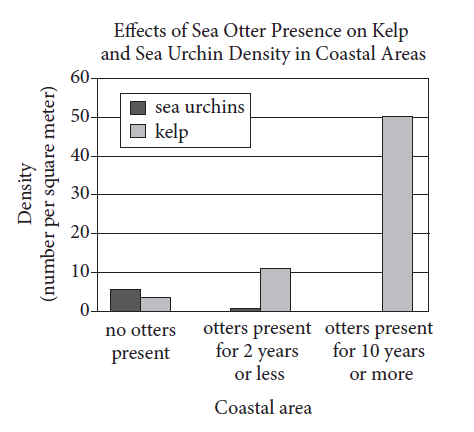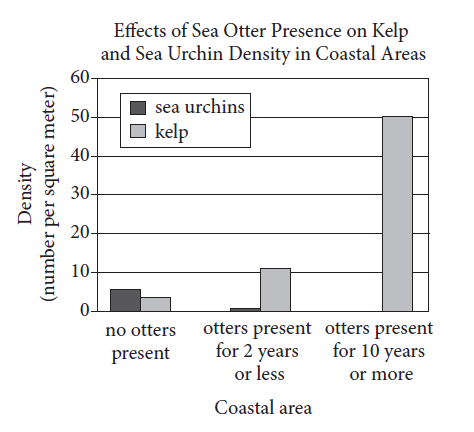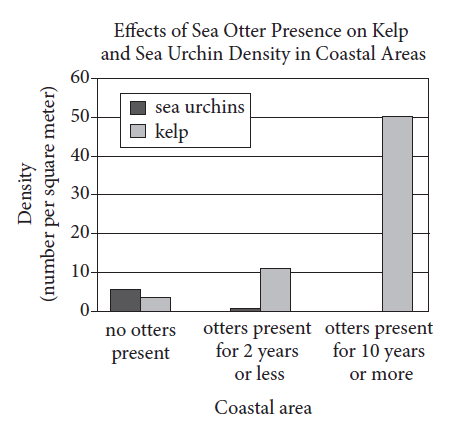Assertion : The role of oxygen in the regulation of respiratory rhythm is quite insignificant.
Reason : Increased and concentration inputs from chemoreceptors can activate respirotory rhytm centre to make necessary adjustments.
If both assertion and reason are true and reason is the correct explanation of assertion
If both assertion and reason are true and reason is not the correct explanation of assertion
If assertion is true but reason is false.
If both assertion and reason are false.
The correct Answer is:A
Step-by-Step Solution
1. Understanding the Assertion: The assertion states that the role of oxygen in regulating the respiratory rhythm is quite insignificant. This implies that oxygen levels do not play a major role in controlling how we breathe.
2. Understanding the Reason: The reason provided states that increased partial pressure of carbon dioxide (PCO₂) and hydrogen ion concentration (H⁺) inputs from chemoreceptors can activate the respiratory rhythm center to make necessary adjustments. This suggests that the body primarily responds to changes in carbon dioxide and pH levels rather than oxygen levels.
3. Role of the Respiratory Centers: The respiratory rhythm is primarily controlled by centers located in the brain, particularly the pneumotaxic center in the pons region. This center moderates the function of the respiratory rhythm center and helps control the duration of inspiration.
4. Chemoreceptors and Their Function: Chemoreceptors located in the carotid and aortic bodies detect changes in the blood's carbon dioxide and hydrogen ion concentrations. When carbon dioxide levels rise, the pH of the blood decreases (becomes more acidic), which is sensed by these chemoreceptors.
5. Impact on Respiratory Rate: When the chemoreceptors detect increased PCO₂ and H⁺ concentrations, they send signals to the respiratory centers to adjust the breathing rate accordingly. This means that the respiratory rate is more significantly influenced by carbon dioxide levels than by oxygen levels.
6. Conclusion: Since the assertion claims that oxygen's role is insignificant and the reason correctly explains how carbon dioxide and hydrogen ions regulate breathing, both the assertion and reason are true. The reason is a correct explanation of the assertion.
Final Answer
Both assertion and reason are true, and the reason is the correct explanation of the assertion.
---
Both assertion and reason are true, and the reason is the correct explanation of the assertion.
Topper's Solved these Questions
- BREATHING AND EXCHANGE OF GASESBOOK - NCERT FINGERTPS ENGLISHCHAPTER - BREATHING AND EXCHANGE OF GASESEXERCISE - Higher Order Thinking
12 Videos
- BREATHING AND EXCHANGE OF GASESBOOK - NCERT FINGERTPS ENGLISHCHAPTER - BREATHING AND EXCHANGE OF GASESEXERCISE - Exemplar Problems
13 Videos
- BODY FLUIDS AND CIRCULATIONBOOK - NCERT FINGERTPS ENGLISHCHAPTER - BODY FLUIDS AND CIRCULATIONEXERCISE - Body Fluids And Circulation
151 Videos
- CELL - THE UNIT OF LIFEBOOK - NCERT FINGERTPS ENGLISHCHAPTER - CELL - THE UNIT OF LIFEEXERCISE - Cell - The Unit Of Life
159 Videos
Similar Questions
Which of the following statements are CORRECT ?
I. A specialized center present in the medulla region of the brain called respiratory rhythm center is primarily responsible for the regulation of respiration.
II. A Chemosensitive area is situated adjacent to the rhythm which is highly sensitive to O2,CO2 and hydrogen ions .
III . Receptors associated with aortic arch and carotid artery also can recognize changes in CO2andH+ concentration and send necessary signals to the rhythm center for remedial actions.
IV The neural signal from the pneumatic center can increase the duration of inspiration and thereby alter the respiratory rate .
View SolutionPick out the correct statements:
a) Pneumotaxic centre moderates the functioning of respiratory rhythm centre.
b) Pneumotaxic centre is primarily responsible for regulation of respiratory movements.
c) Decrease in pH of cerebrospinal fluid is detected by medulla.
d) The role of carbon dioxide in the regulation of respiratory rhythm is quite insignificant.
View Solution
Knowledge Check
Fill up the blanks in the following paragraph by selecting the correct option.
Human beings have a significant ability to maintain and moderate the respiratory rhythm to suti the demands of the body tissues. This is done by the neural system. A specialised centre present in the medulla region of the brain called (i)_______ is primarily responsible for this regulation. Another centre present in the pons region of the brain called (ii)_______ can moderate the functions of the repiratory rhytm cenre. Neutral signal from this cenre cen reduce the duration of (iii)_______ and thereby alter the respiratory rate. A (iv)_______ is situated adjacent to the rhythm centre which is highly sensitive to CO2 and hydrogen ions.A(i)(ii)(iii)(iv)Chemosensitive areaRespiratory rhythm centreExpirationPneumotaxic centreB(i)(ii)(iii)(iv)Respiratory rhythm centrePneumotaxic centreInspirationChemosensitive areaC(i)(ii)(iii)(iv)Respiratory rhythm centreChemosensitive areaExpirationPneumotaxic centreD(i)(ii)(iii)(iv)Pneumotaxic centreChemosensitive areaInspirationRespiratory rhythm centreEnvironmentalist Otters
It has long been known that the sea otters (23) living along the West Coast of North America help––––––––––––––––––––––––––––––––––––––––––––––––––––––– keep kelp forests in their habitat healthy and vital. They do this by feeding on sea urchins and other herbivorous invertebrates that graze voraciously on kelp. With sea otters to keep the population of sea urchins in check, kelp forests can flourish. In fact, (24) two years or less of sea otters can completely eliminate sea urchins––––––––––––––––––––––––––––––––––––––––––––––––––––––––––––––––––––––– in a coastal area (see chart).

Adapted from David O. Duggins, “Kelp Beds and Sea Otters: An Experimental Approach.” ©1980 by the Ecological Society of America.
Without sea otters present, (25) nevertheless–––––––––––––, kelp forests run the danger of becoming barren stretches of coastal wasteland known as urchin barrens.
[1] What was less well-known, until recently at least, was how this relationship among sea otters, sea urchins, and kelp forests might help fight global warming. [2] The amount of carbon dioxide in the atmosphere has increased 40 percent (26) . [3] A recent study by two professors at the University of California, Santa Cruz, Chris Wilmers and James Estes, (27) suggests, that––––––––––––––– kelp forests protected by sea otters can absorb as much as twelve times the amount of carbon dioxide from the atmosphere as those where sea urchins are allowed to (28) devour–––––––– the kelp. [4] Like (29) their––––– terrestrial plant cousins, kelp removes carbon dioxide from the atmosphere, turning it into sugar fuel through photosynthesis, and releases oxygen back into the air.
[5] Scientists knew this but did not recognize (30) how large a role they played–––––––––––––––––––––––––––––– in helping kelp forests to significantly decrease the amount of carbon dioxide in the atmosphere. [6] Far from making no difference to the ecosystem, the presence of otters was found to increase the carbon storage of kelp forests by 4.4 to 8.7 megatons annually, offsetting the amount of carbon dioxide emitted by three million to six million passenger cars each year. (31)
Wilmers and Estes caution, however, that (32) having more otters––––––––––––––––––––– will not automatically solve the problem of higher levels of carbon dioxide in the air. But they suggest that the presence of otters provides a good model of how carbon can be sequestered, (33) or removed, from––––––––––––––––––– the atmosphere through the management of animal populations. If ecologists can better understand what kinds of impacts animals might have on the environment, Wilmers contends, “there might be opportunities for win-win conservation scenarios, whereby animal species are protected or enhanced, and carbon gets sequestered.”ANO CHANGEBliving along the West Coast of North America, they helpCthat live along the West Coast of North America and help toDthat live along the West Coast of North America, where they helpEnvironmentalist Otters
It has long been known that the sea otters (23) living along the West Coast of North America help––––––––––––––––––––––––––––––––––––––––––––––––––––––– keep kelp forests in their habitat healthy and vital. They do this by feeding on sea urchins and other herbivorous invertebrates that graze voraciously on kelp. With sea otters to keep the population of sea urchins in check, kelp forests can flourish. In fact, (24) two years or less of sea otters can completely eliminate sea urchins––––––––––––––––––––––––––––––––––––––––––––––––––––––––––––––––––––––– in a coastal area (see chart).

Adapted from David O. Duggins, “Kelp Beds and Sea Otters: An Experimental Approach.” ©1980 by the Ecological Society of America.
Without sea otters present, (25) nevertheless–––––––––––––, kelp forests run the danger of becoming barren stretches of coastal wasteland known as urchin barrens.
[1] What was less well-known, until recently at least, was how this relationship among sea otters, sea urchins, and kelp forests might help fight global warming. [2] The amount of carbon dioxide in the atmosphere has increased 40 percent (26) . [3] A recent study by two professors at the University of California, Santa Cruz, Chris Wilmers and James Estes, (27) suggests, that––––––––––––––– kelp forests protected by sea otters can absorb as much as twelve times the amount of carbon dioxide from the atmosphere as those where sea urchins are allowed to (28) devour–––––––– the kelp. [4] Like (29) their––––– terrestrial plant cousins, kelp removes carbon dioxide from the atmosphere, turning it into sugar fuel through photosynthesis, and releases oxygen back into the air.
[5] Scientists knew this but did not recognize (30) how large a role they played–––––––––––––––––––––––––––––– in helping kelp forests to significantly decrease the amount of carbon dioxide in the atmosphere. [6] Far from making no difference to the ecosystem, the presence of otters was found to increase the carbon storage of kelp forests by 4.4 to 8.7 megatons annually, offsetting the amount of carbon dioxide emitted by three million to six million passenger cars each year. (31)
Wilmers and Estes caution, however, that (32) having more otters––––––––––––––––––––– will not automatically solve the problem of higher levels of carbon dioxide in the air. But they suggest that the presence of otters provides a good model of how carbon can be sequestered, (33) or removed, from––––––––––––––––––– the atmosphere through the management of animal populations. If ecologists can better understand what kinds of impacts animals might have on the environment, Wilmers contends, “there might be opportunities for win-win conservation scenarios, whereby animal species are protected or enhanced, and carbon gets sequestered.”ANO CHANGEBthey’reCitsDit’s
Gibbs-Helmoholtz equation relates the free energy change to the enthalpy and entropy changes of the process as
(ΔG)PT=ΔH−TΔS
The magnitude of ΔH does not change much with the change in temperature but the energy factor TΔS changes appreciably. Thus, spontaneity of a process depends very much on temperature.
The dissolution of CaCl2.6H2O in a large volume of water is endothermic to the extent of 3.5kcalmol−1. For the reaction. CaCl2(s)+6H2O(l)→CaCl2.6H2O(s)ΔHis−23.2kcal. The heat of solution of anhydrous CaCI2 in large quantity of water will be
View SolutionGo through the following statements
(i) the peripheral chemoreceptors for regulation of respiration are located in carotid veins and arch of aorta
(ii) the primary effect of pneumotaxic centre is to control the switch off point of inspiratory signal and thus limit inspiraton
(iii) the chemosensitve area for brain for respiratory control is highly sensitive to O2 concentration
(iv) In case of fetal haemoglobin the oxygen haemoglobin dissociation curve is shifted toward left
which of these are correct ?
(a) i, ii & iv
(b) ii and iv
(c) ii, iii & iv
(d) iii and iv
View SolutionRead the following statement .
a) High H+ concentration and higher temperature are favourable for dissociation of oxygen from oxyhaemoglobin.
b) Partial pressure of oxygen in alveoli is higher than in tissue .
c) The maximum volume of air a person can breather in after a forced expiration is vital capacity.
d) In alveoli PCO2 low and PO2 high are for dissociation of CO2 from carbamino haemoglobin .
How many of the above statement are true ?
View SolutionEnvironmentalist Otters
It has long been known that the sea otters (23) living along the West Coast of North America help––––––––––––––––––––––––––––––––––––––––––––––––––––––– keep kelp forests in their habitat healthy and vital. They do this by feeding on sea urchins and other herbivorous invertebrates that graze voraciously on kelp. With sea otters to keep the population of sea urchins in check, kelp forests can flourish. In fact, (24) two years or less of sea otters can completely eliminate sea urchins––––––––––––––––––––––––––––––––––––––––––––––––––––––––––––––––––––––– in a coastal area (see chart).

Adapted from David O. Duggins, “Kelp Beds and Sea Otters: An Experimental Approach.” ©1980 by the Ecological Society of America.
Without sea otters present, (25) nevertheless–––––––––––––, kelp forests run the danger of becoming barren stretches of coastal wasteland known as urchin barrens.
[1] What was less well-known, until recently at least, was how this relationship among sea otters, sea urchins, and kelp forests might help fight global warming. [2] The amount of carbon dioxide in the atmosphere has increased 40 percent (26) . [3] A recent study by two professors at the University of California, Santa Cruz, Chris Wilmers and James Estes, (27) suggests, that––––––––––––––– kelp forests protected by sea otters can absorb as much as twelve times the amount of carbon dioxide from the atmosphere as those where sea urchins are allowed to (28) devour–––––––– the kelp. [4] Like (29) their––––– terrestrial plant cousins, kelp removes carbon dioxide from the atmosphere, turning it into sugar fuel through photosynthesis, and releases oxygen back into the air.
[5] Scientists knew this but did not recognize (30) how large a role they played–––––––––––––––––––––––––––––– in helping kelp forests to significantly decrease the amount of carbon dioxide in the atmosphere. [6] Far from making no difference to the ecosystem, the presence of otters was found to increase the carbon storage of kelp forests by 4.4 to 8.7 megatons annually, offsetting the amount of carbon dioxide emitted by three million to six million passenger cars each year. (31)
Wilmers and Estes caution, however, that (32) having more otters––––––––––––––––––––– will not automatically solve the problem of higher levels of carbon dioxide in the air. But they suggest that the presence of otters provides a good model of how carbon can be sequestered, (33) or removed, from––––––––––––––––––– the atmosphere through the management of animal populations. If ecologists can better understand what kinds of impacts animals might have on the environment, Wilmers contends, “there might be opportunities for win-win conservation scenarios, whereby animal species are protected or enhanced, and carbon gets sequestered.”
Where is the most logical place in this paragraph to add the following sentence?
What Wilmers and Estes discovered in their study, therefore, surprised them.
View SolutionEnvironmentalist Otters
It has long been known that the sea otters (23) living along the West Coast of North America help––––––––––––––––––––––––––––––––––––––––––––––––––––––– keep kelp forests in their habitat healthy and vital. They do this by feeding on sea urchins and other herbivorous invertebrates that graze voraciously on kelp. With sea otters to keep the population of sea urchins in check, kelp forests can flourish. In fact, (24) two years or less of sea otters can completely eliminate sea urchins––––––––––––––––––––––––––––––––––––––––––––––––––––––––––––––––––––––– in a coastal area (see chart).

Adapted from David O. Duggins, “Kelp Beds and Sea Otters: An Experimental Approach.” ©1980 by the Ecological Society of America.
Without sea otters present, (25) nevertheless–––––––––––––, kelp forests run the danger of becoming barren stretches of coastal wasteland known as urchin barrens.
[1] What was less well-known, until recently at least, was how this relationship among sea otters, sea urchins, and kelp forests might help fight global warming. [2] The amount of carbon dioxide in the atmosphere has increased 40 percent (26) . [3] A recent study by two professors at the University of California, Santa Cruz, Chris Wilmers and James Estes, (27) suggests, that––––––––––––––– kelp forests protected by sea otters can absorb as much as twelve times the amount of carbon dioxide from the atmosphere as those where sea urchins are allowed to (28) devour–––––––– the kelp. [4] Like (29) their––––– terrestrial plant cousins, kelp removes carbon dioxide from the atmosphere, turning it into sugar fuel through photosynthesis, and releases oxygen back into the air.
[5] Scientists knew this but did not recognize (30) how large a role they played–––––––––––––––––––––––––––––– in helping kelp forests to significantly decrease the amount of carbon dioxide in the atmosphere. [6] Far from making no difference to the ecosystem, the presence of otters was found to increase the carbon storage of kelp forests by 4.4 to 8.7 megatons annually, offsetting the amount of carbon dioxide emitted by three million to six million passenger cars each year. (31)
Wilmers and Estes caution, however, that (32) having more otters––––––––––––––––––––– will not automatically solve the problem of higher levels of carbon dioxide in the air. But they suggest that the presence of otters provides a good model of how carbon can be sequestered, (33) or removed, from––––––––––––––––––– the atmosphere through the management of animal populations. If ecologists can better understand what kinds of impacts animals might have on the environment, Wilmers contends, “there might be opportunities for win-win conservation scenarios, whereby animal species are protected or enhanced, and carbon gets sequestered.”
Which choice offers an accurate interpretation of the data in the chart?
View Solution
